1. Wind is powering America.
From utility-scale wind farms to small distributed wind applications to the nation’s first offshore wind project, the U.S. wind industry continued to grow in 2016. The U.S. Department of Energy recently published three reports breaking down the state of wind energy in 2016. From invigorating the U.S. economy to advancing engineering breakthroughs, wind energy is moving America forward.
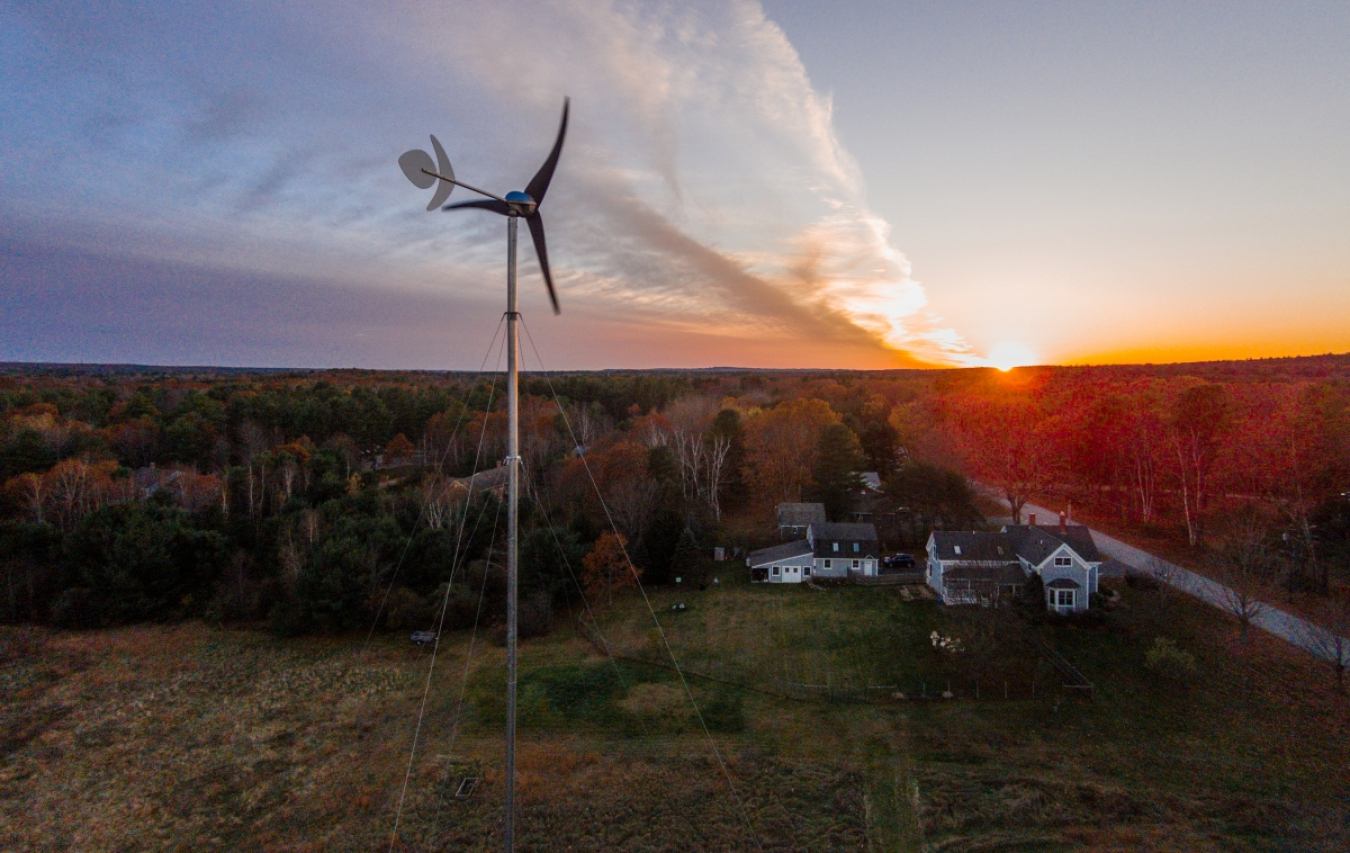
Distributed wind applications provide energy locally, directly serving on-site electricity needs of farms, schools, or manufacturing facilities, or tied to a local grid.
2. The wind industry creates American jobs.
Across all 50 states, wind energy powered more than 101,000 jobs in the United States in 2016, an increase of 32% from 2015. Across 27 states, U.S. manufacturers of small wind turbines (100 kilowatts or less) accounted for 98% of 2016 domestic small wind sales.
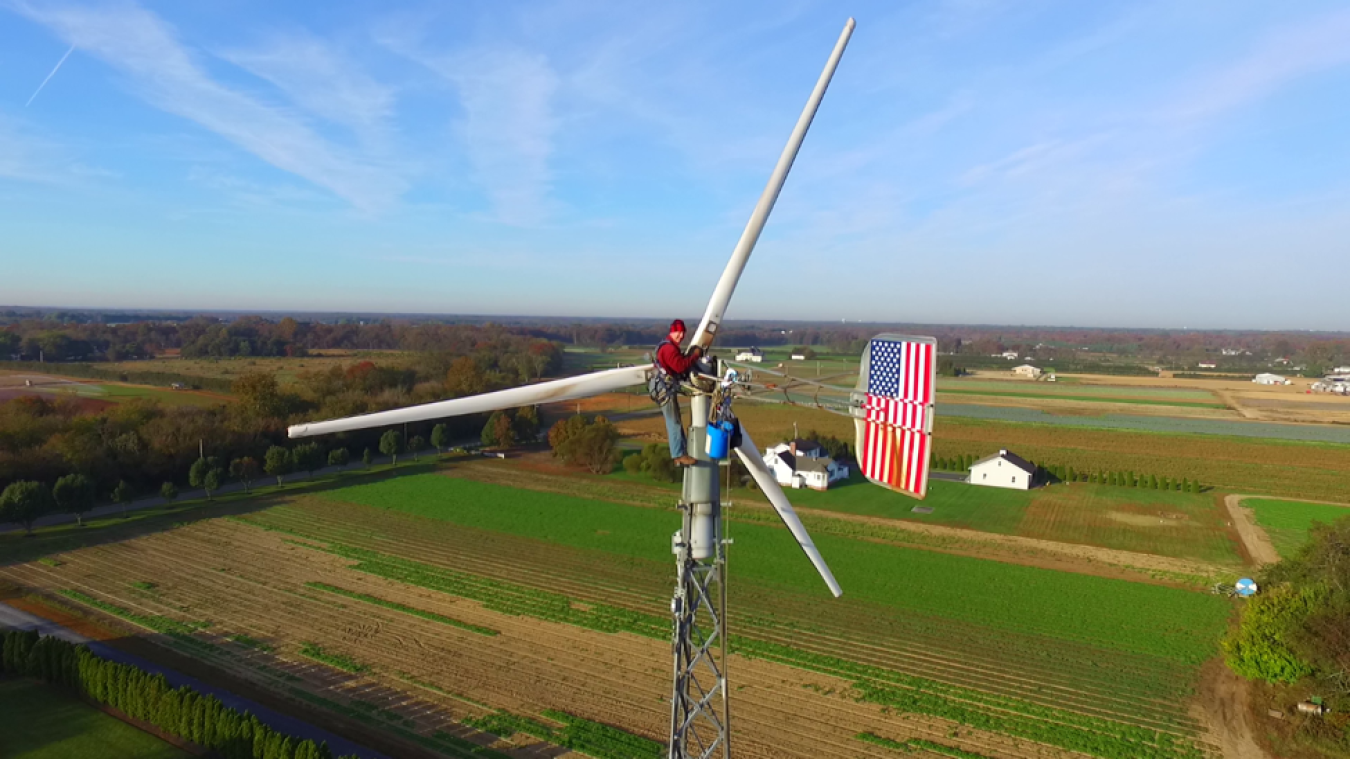
Wind energy powered more than 101,000 jobs in the United States in 2016.
3. Offshore wind has arrived in the U.S.
In December 2016, America achieved another milestone. The first American offshore wind farm began operating off the coast of Rhode Island, delivering power to the community on Block Island. More offshore wind projects are anticipated in the near future, bringing with them the promise of new jobs and low-cost, carbon-free energy.
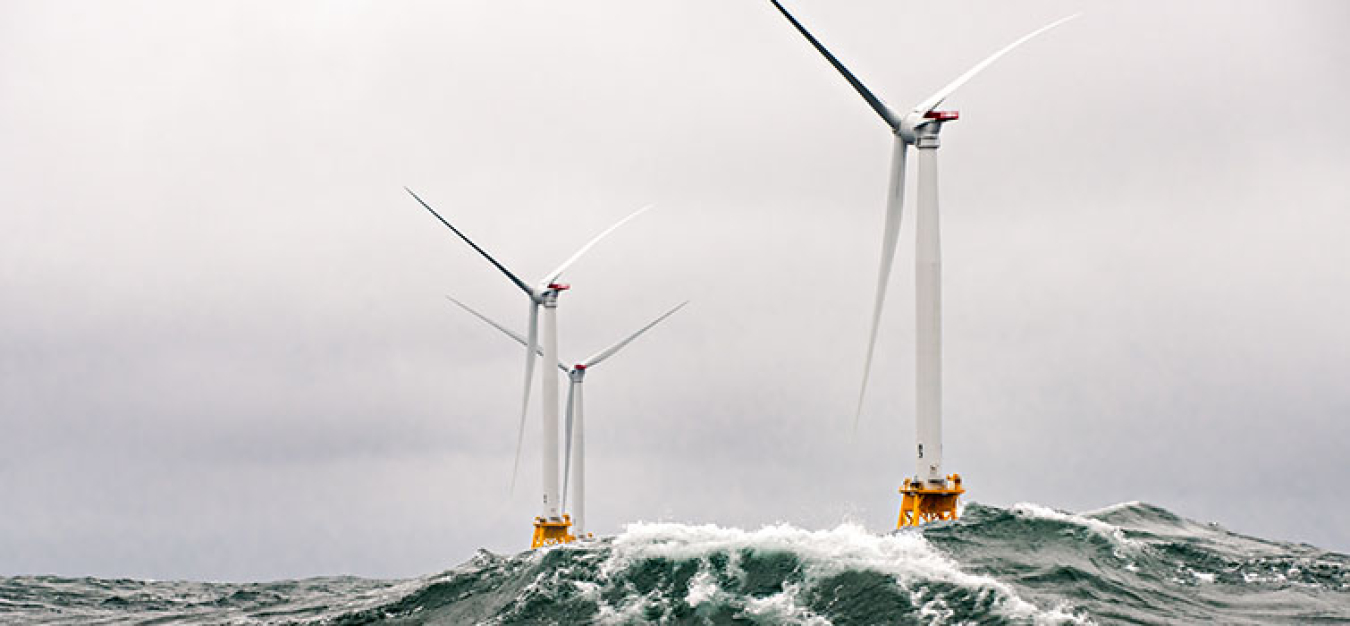
The nation's first offshore wind farm in Rhode Island.
4. The price of wind turbines – and wind energy – is as low as ever.
Prices of wind turbines and their installation costs have plummeted over the past eight years. This decline in costs, combined with the ongoing development of more efficient wind turbines and record-low interest rates, has yielded land-based wind power prices that compare favorably to natural gas prices in 2017 and beyond. Offshore wind costs and prices have also declined across the globe.
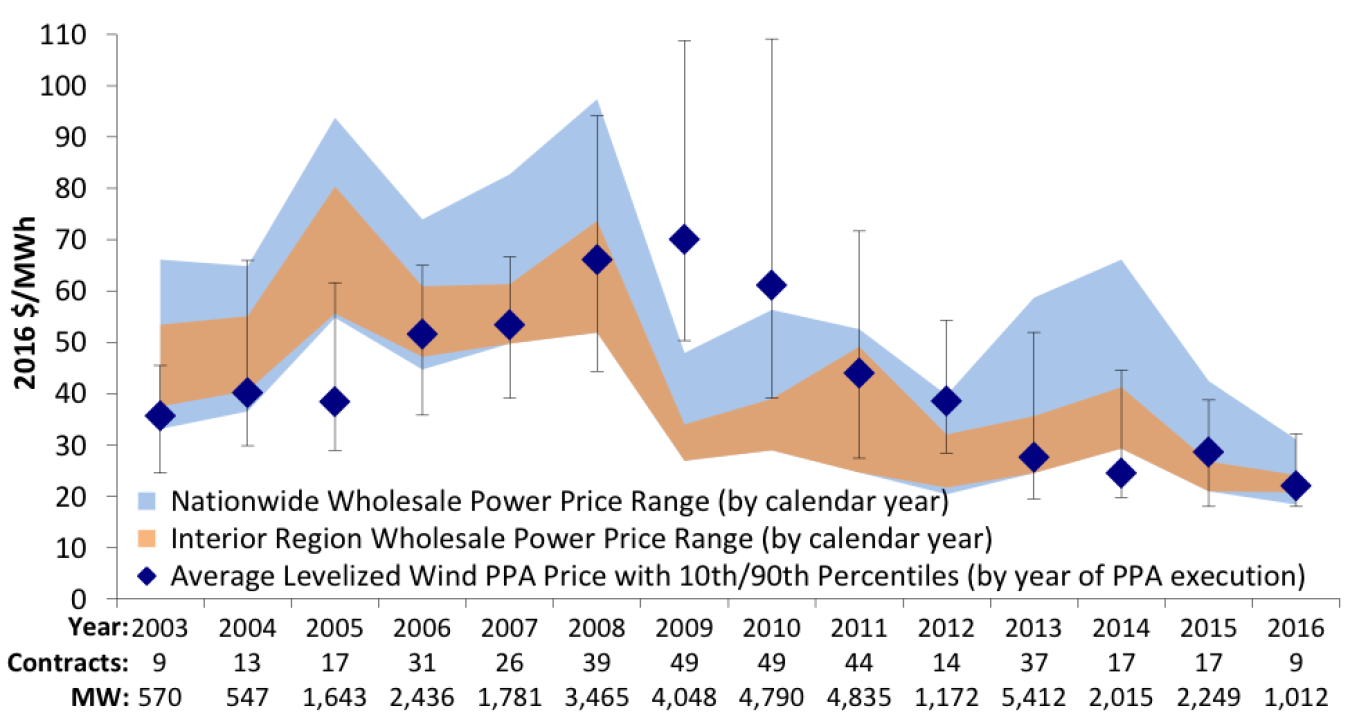
Wind power purchase agreement (PPA) prices –- i.e. the price at which electricity is sold –- remained low and competitive, near 2¢ per kilowatt-hour in 2016.
5. Wind turbines are getting taller, more efficient, and more powerful.
Manufacturers are enabling the wind industry to reach new heights — literally — by creating massive wind turbines on land and offshore. These larger turbines are more economical. One new trend that emerged in 2016 was that a quarter of new utility-scale wind projects used turbines of different sizes — built by the same manufacturer — within the same project. Distributed wind turbines are even more diverse, with U.S. distributed wind projects installed in 2016 encompassing 29 different wind turbine models, ranging from 160 watts to 2.3 megawatts.
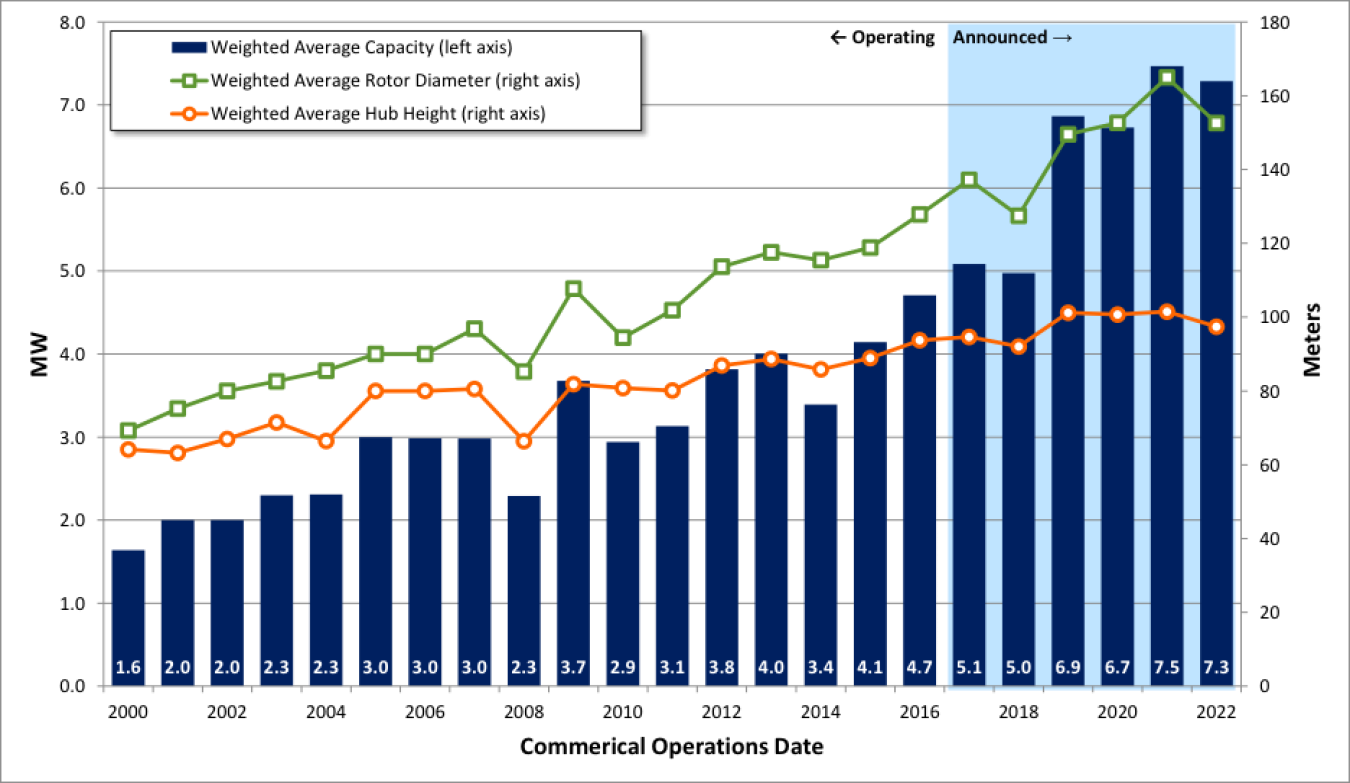
Global turbine capacities, rotor diameters, and hub heights over time in offshore projects.
Learn more about how wind is powering America in the U.S. Department of Energy’s state-of-the-industry market reports covering the land-based utility-scale, distributed, and offshore wind market sectors. Visit energy.gov/windreport to learn more.
Watch how America's wind industry has grown in the past year. | U.S. Department of Energy
